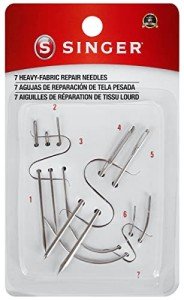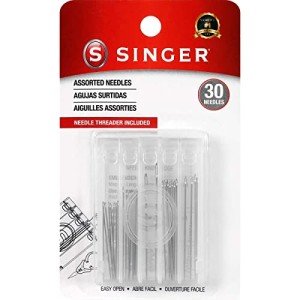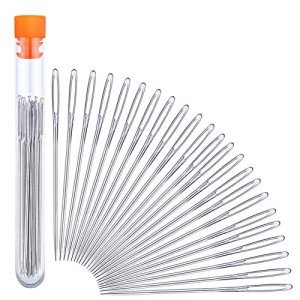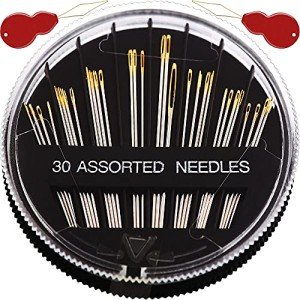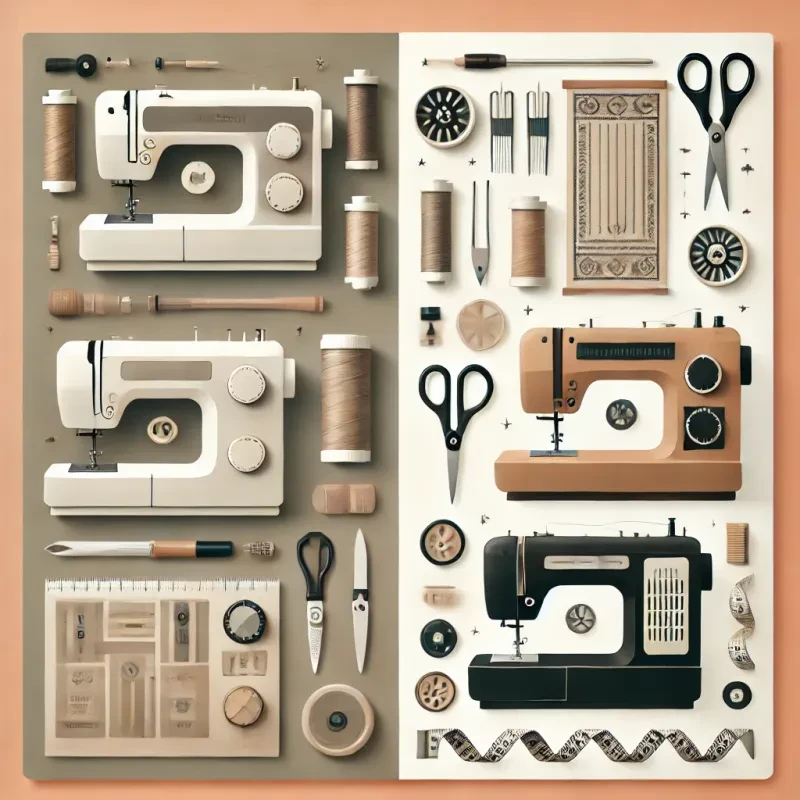The needle is one of the most important tools in sewing. Whether you're using a sewing machine or hand sewing, choosing the right needle for your fabric, thread, and project type is critical for achieving professional results. In this guide, we’ll help you understand the different types of needles and how to choose the right one for your sewing needs.
Understanding Needle Sizes
Needles come in various sizes, and each size is designed for different types of fabric. Generally, needle sizes range from 60/8 to 120/19, with the smaller numbers used for lightweight fabrics and the larger numbers for heavier materials.
- 60/8 – 70/10: Perfect for lightweight fabrics such as chiffon, silk, and fine cotton.
- 80/12 – 90/14: Best suited for medium-weight fabrics like linen, broadcloth, and light denim.
- 100/16 – 120/19: Ideal for heavy fabrics such as canvas, upholstery, and thick denim.
When choosing a needle size, remember: the finer the fabric, the smaller the needle, and the heavier the fabric, the larger the needle.
Types of Needles
There are several types of sewing needles, each designed for specific tasks or fabric types. Understanding these needle types will help you choose the perfect one for your project.
1. Universal Needle
The universal needle is the most commonly used needle. It has a slightly rounded point and works well with both woven and knit fabrics. This is an all-purpose needle, making it great for beginners and general sewing.
2. Ballpoint Needle
The ballpoint needle is designed for knit and stretch fabrics. It has a rounded tip that pushes the fibers apart rather than piercing them, preventing damage to the fabric. Use this needle when working with jerseys, interlock, or other stretchy materials.
3. Sharp Needle
The sharp needle, also known as a quilting needle, has a very fine point. It's ideal for precise stitching on tightly woven fabrics, like cotton, silk, and microfibers. Quilters prefer this needle for detailed work and piecing quilts.
4. Denim Needle
As the name suggests, the denim needle is designed for heavyweight fabrics such as denim, canvas, and other thick materials. It has a reinforced shaft to prevent bending and breaking when sewing through tough layers.
5. Embroidery Needle
The embroidery needle has a larger eye to accommodate thicker embroidery threads and prevent shredding. It is designed to work well with delicate threads, preventing snags and creating smooth, intricate designs.
6. Leather Needle
The leather needle has a wedge-shaped point designed to pierce through leather, vinyl, and suede without tearing the fabric. Use this needle when working on leather jackets, handbags, or upholstery projects.
Needles for Hand Sewing
For hand sewing, there are various types of needles available as well. Here are a few commonly used ones:
- Sharps: General-purpose needles suitable for most hand sewing tasks.
- Betweens: These shorter needles are ideal for detailed work like quilting or stitching small areas.
- Embroidery/Crewel Needles: These needles have a larger eye to accommodate embroidery threads for hand stitching decorative designs.
- Milliner Needles: Longer needles used for basting, pleating, or hat-making.
How to Choose the Right Needle for Your Project
Choosing the right needle involves considering three main factors: fabric type, thread thickness, and the nature of your sewing project.
-
Match the Needle to the Fabric: Lightweight fabrics, like silk or chiffon, require smaller needles, such as 60/8 or 70/10. For heavy fabrics like denim or canvas, larger needles, such as 100/16 or 110/18, are recommended.
-
Consider the Thread Weight: Thicker threads require larger needles to prevent breakage, while finer threads work well with smaller needles. Make sure the needle's eye can accommodate the thickness of the thread without causing friction.
-
Special Projects Need Specialized Needles: If you're working with stretch fabrics, a ballpoint needle is essential to prevent snags. When sewing leather or vinyl, always opt for a leather needle, as it is designed to pierce without damaging the material.
Needle Longevity and Replacement
It’s essential to change your needle regularly. Sewing needles become dull over time, which can cause skipped stitches, fabric snags, and uneven seams. A good rule of thumb is to replace your needle after every 8-10 hours of sewing or when you start a new project with a different fabric type.
Common Mistakes to Avoid When Choosing a Needle
-
Using the Wrong Needle Size:
If the needle is too small for the fabric, it can break or cause poor stitch quality. Similarly, using too large a needle can damage delicate fabrics. -
Ignoring Thread and Needle Compatibility:
Always choose a needle that matches the thread thickness. Too small a needle can cause the thread to break, while too large a needle can create holes in the fabric. -
Not Changing Needles Regularly:
A dull needle can cause damage to your fabric and compromise the quality of your stitches. Make sure to replace your needle often.
Conclusion
Choosing the right needle for your sewing projects is crucial for ensuring clean, professional results. By understanding needle sizes, types, and uses, you can make informed decisions and improve your sewing skills. Whether you're working with delicate silk, heavy denim, or intricate embroidery, the right needle will make all the difference. So next time you sit down at your sewing machine or pick up a needle for hand stitching, take a moment to choose the perfect tool for the job.
